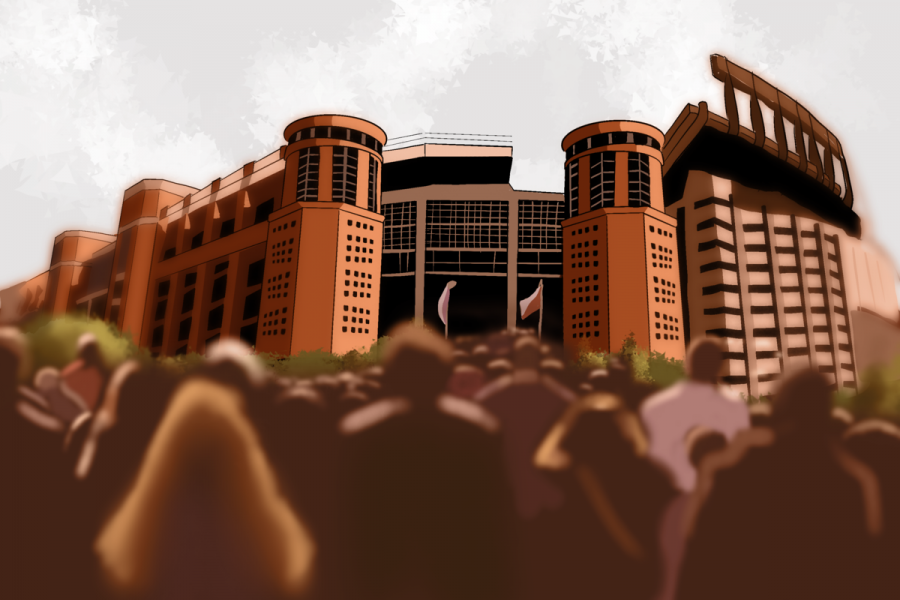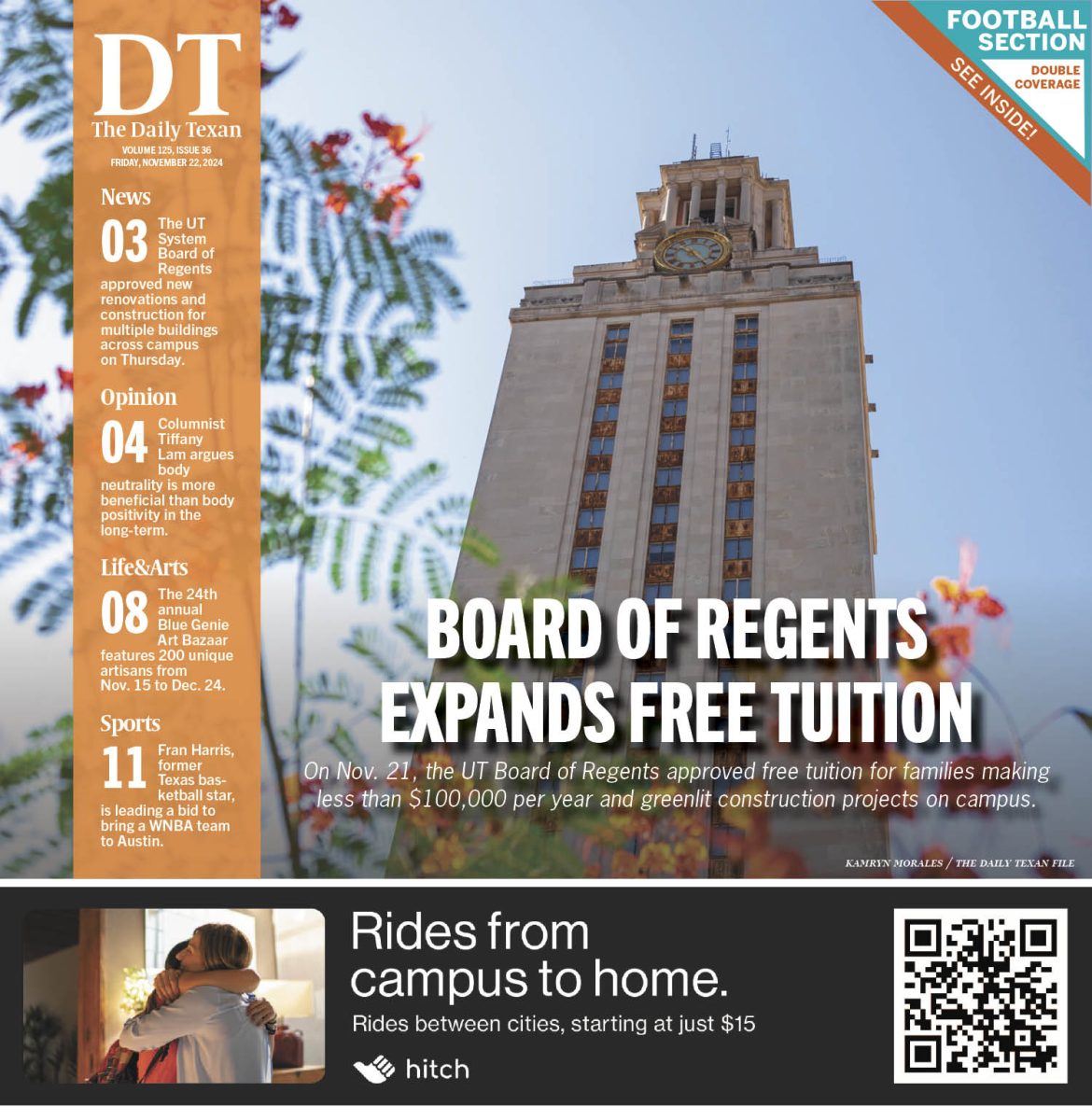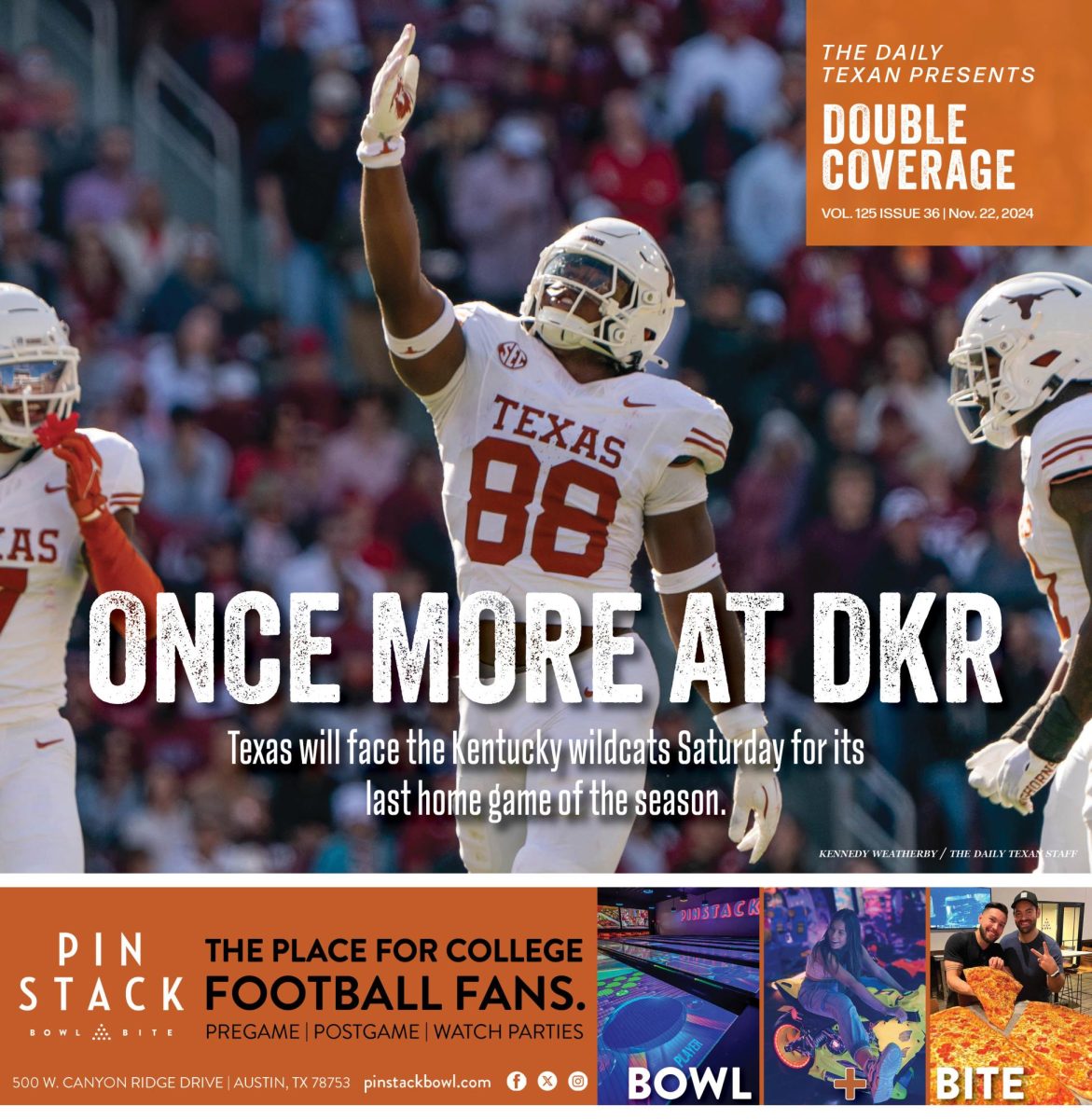Reduce football stadium capacity
September 22, 2021
Editor’s Note: This column first appeared as part of the September 17 flipbook.
On Sept. 5, state data reported that the Austin area had zero available ICU beds for adults. One day prior, 91,000 Longhorn football fans were packed into Darrell K Royal-Texas Memorial Stadium.
During the 2020 football season, stadium capacity was set to 25%. On Sept. 14, 2020, Austin Public Health’s tracker reported 75 new cases in Travis County. On that same day this year, there were 676 new cases. Despite the availability of the vaccine, Travis County is in Stage 5. In other words, we are worse off now than we were a year ago, and yet, the University is allowing over 75,000 people into a crowded stadium.
The University must reduce stadium capacity to at least 50% to mitigate the spread of COVID-19 and protect both its students and the larger community. Although UT doesn’t have a lot of power in enacting COVID-19 safety protocols, the least the University could do is limit the number of people allowed in the stadium.
Drew Martin, executive senior associate athletics director for external affairs, said the decision to transition to 100% capacity was made jointly by the University president’s office, medical leaders on campus and in the community and executive staff within athletics.
“With the success of the vaccine rollout, we feel confident that the science is there and has proven to be effective,” Martin said, before explaining that there are other precautions in place, like sanitizer dispensers, cashless transactions and free vaccinations on Bevo Boulevard.
While the relative success of the vaccine rollout has greenlighted the return of sporting events and music festivals, these decisions fail to consider rapidly multiplying variants of the virus that have proven to create breakthrough cases. These risks are especially compounded by the ban on mask mandates.
It seems that science is actively being ignored. At the end of the day, offering hand sanitizer is not a foolproof way to combat COVID-19 cases. Austin Public Health’s guidelines for Stage 5 definitely do not include packing a stadium full of 100,000 people.
Another harmful effect of 100% stadium capacity is the illusion of a return to normalcy. Students might feel like it’s OK to let their guards down regarding safety measures.
Government senior Mackenzie Smith said the decision to rush back to 100% capacity feels inappropriate.
“This policy puts students in danger, and it’s clear that a driving factor is the (financial) income from these games,” Smith said. “I’m hesitant to believe there was not a large spike in cases after Labor Day, especially because I know that a lot of students don’t bother getting tested because they want to avoid the two-week quarantine. There’s also a lack of available free testing.”
The many emails I received about buying The Big Ticket lead me to believe it’s largely financial motivations that have influenced the decision to return to 100% capacity. Profit will never matter more than the safety of students. It’s important for the University to prove that by setting pragmatic capacity restrictions.
I understand the aching desire to get back to the way things were, but we cannot ignore reality. It is simply not safe to sanction a gathering of nearly 100,000 people.
Michigan is a Plan II and race, indigeneity and migration junior from Shreveport, Louisiana.





